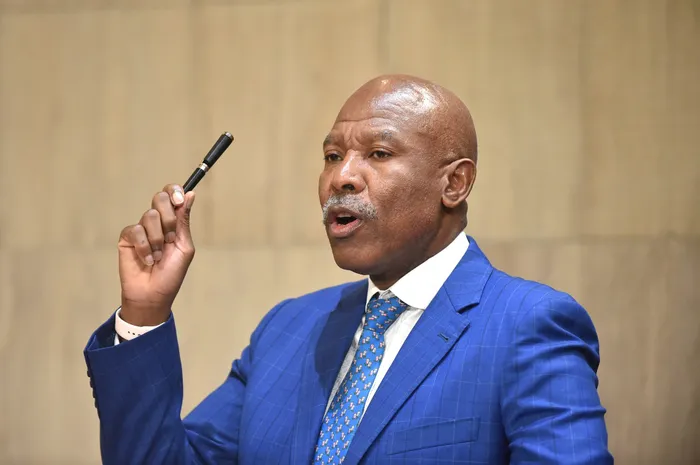Economists hope a rate cut is on the horizon as inflation could slow further

South African Reserve Bank Governor Lesetja Kganyago announce the bank’s decision on interest rates. Picture: Thobile Mathonsi Independent Newspapers
In spite of expectations that the South African Reserve Bank (SARB) will keep interest rates unchanged today, economists have remained hopeful that the first rate cut since July 2020 was now on the horizon.
The SARB’s monetary policy committee (MPC) is widely expected to keep the repurchase rate at a 14-year high of 8.25% while the prime lending rate would also remain at 11.75% per annum.
The central bank started the rate-hiking cycle in November 2021 as the economic hardship and the nationwide lockdown from the Covid-19 pandemic had started easing.
However, headline consumer inflation has remained stubbornly high towards the upper limit of the SARB’s 3–6% target range, leaving the MPC hawkish until inflation is within the 4.5% midpoint.
Old Mutual Group chief economist Johann Els said that despite sharp easing in consumer goods inflation to 5.3% in April, the SARB was still very concerned about inflation expectations which precludes any immediate rate cuts this week.
Els pointed out that recent weeks have seen significant strength in the rand, which further complicates the decision-making process for the SARB.
“Even if the SARB had considered a rate cut, the timing would probably not have been appropriate given the proximity to the national elections and the potential volatility in the currency markets that might arise from the election results,” Els said.
Despite not expecting a rate cut this week, Els asserted that South Africa was already in rate-cutting territory.
He said that while petrol price increases have kept overall inflation high, inflation in other consumer goods has eased substantially.
Between March and April, the weighted average inflation for consumer goods such as clothing, footwear, furniture, appliances, and vehicles declined from 4.2% to 3.5%.
“The recent petrol price increases have had a deflationary effect by limiting consumers’ disposable income, which in turn reduces spending on other goods and services, limiting their price increases,” he said.
Els said that while it was important to address inflation expectations, a delayed rate cut could risk pushing certain sectors of the economy into recessionary territory.
He advocated for a rate cut at the next MPC meeting in July, warning that waiting until September could be a policy error.
The consensus among economists is that the SARB will consider a rate cut towards the end of 2024, but this will depend on the domestic and global inflation outlook.
Thami Khoza, portfolio manager at Equilibrium, an independent discretionary fund manager, warned of market volatility due to a multitude of economic, political, and geopolitical risks, particularly with the eagerly awaited election result.
“We will hopefully also have more clarity around the first move towards lower interest rates soon, both in South Africa and globally,” Khoza said.
“Upside risks to the inflation outlook, however, continue to stem from a weaker rand and geopolitically driven higher global food and oil prices.”
Momentum Investments’ economist Sanisha Packirisamy said the SARB was also keeping an eye on the rate decisions by major central banks, particularly the US Federal Reserve.
Interest rate differentials impact capital flows, and this could result in a weaker rand and consequently lead to higher imported inflation.
“The SARB expects inflation to moderate in the second quarter of 2024 compared to the first quarter, with headline inflation easing faster than core inflation. Headline inflation is expected to ease by three percentage points to 5.1% in the second quarter and core inflation is expected to ease by one percentage point to 4.7%,” Packirisamy said.
“Headline and core inflation are expected to tick up in the third quarter, likely driven by higher municipal charges. Upward inflationary pressure in the third quarter may also stem from rental inflation and the expected impact of the drier and hotter weather conditions in February and March 2024.
“Thereafter, headline inflation is expected to ease as the quarters progress but at a slower pace given the stickiness in core inflation. The SARB expects headline inflation to settle at 4.5% from the fourth quarter of 2025 onwards.”
BUSINESS REPORT